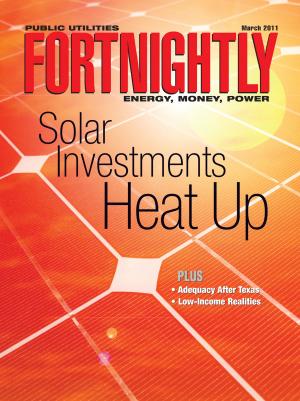Utility-scale projects suffer growing pains.
Michael T. Burr is Fortnightly’s editor-in-chief. Email him at burr@pur.com.
Solar scale-up seems to be happening even faster. Although there are still plenty of small projects—in the kilowatts and single-digit megawatts—many recent contracts involve massive systems in the 200-MW, 500-MW and even the gigawatt range.

Of course, few if any of these large projects would exist today without federal tax subsidies and state-level renewable portfolio standards (RPS)—especially those with solar carve-outs. And solar power still suffers many of the same limitations that plague wind power. Namely, it’s variable and non-dispatchable; its capacity factor never will rival the typical fossil, nuclear or large hydro plant; and on a per-kilowatt basis, it remains more expensive than the least-cost fossil alternatives—or wind power in most cases.
Nevertheless, the dramatic scale-up in project size is bringing solar into the mainstream as a utility-scale generation resource—and as an investment opportunity (see “Chasing the $un”). No longer can solar be dismissed as a novelty or a publicity stunt, à-la the solar panels on Jimmy Carter’s White House. Further, solar brings some advantages that suggest its long-term potential exceeds that of wind power, perhaps by a wide margin.

